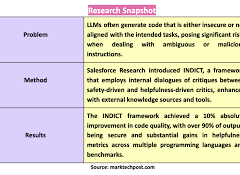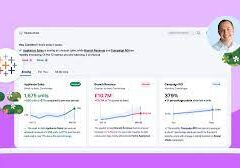Ingest, harmonize, unify, and analyze streaming and batch data with Data Cloud. Then use that data to unlock meaningful and intelligent experiences across Customer 360 applications and beyond. Summer 24 Salesforce Data Cloud Release Notes.
- AI in Data Cloud
Let Einstein do the hard work and autoselect the capabilities that can best influence a predictive outcome. As you build your predictive model, use data and training alerts to improve its quality. The updated UI includes the ability to quickly access different AI models. For more comprehensive AI capabilities, switch to the new Einstein Studio experience.- Leverage Alerts to Evaluate the Quality of Your Predictive Model
Einstein Studio provides alerts to help you manage data discrepancies and issues that can occur during model training. Act on and resolve your alerts to build, retrain, and deploy models that can deliver more accurate predictions. You can review the alerts on the model details page, in model settings, and on the model activity tab. - Let Einstein Autoselect the Best Factors for Your Use Case
Einstein saves you time and intelligently selects the most relevant variables and recommended algorithm for a use case. - Evaluate Your Model Performance with Activity Metrics
Use activity metrics to understand the performance of your predictive or generative model. View a summary of the total number of inferences over different time periods and gain insights into your connection, timeout, and authentication errors. In Model Builder, select the activated model, and go to the Activity tab to view its metrics. - Access Models Quicker with the Updated Einstein Studio Navigation
You can now access models from a centralized location. Use the sidebar to locate models and open the model library. You can also view and manage predictive and generative models from their respective tabs. - Einstein Studio Legacy Tab Is No Longer Available in Data Cloud
The new Einstein Studio tab in Data Cloud is now your home base for creating and connecting your AI models. Previously, you could also access model building capabilities on the Einstein Studio (Legacy) tab. We replaced this tab with one experience that provides access to more enhanced AI capabilities, such as predictive and generative AI models and activity metrics. You also get data, model, and training alerts.
- Leverage Alerts to Evaluate the Quality of Your Predictive Model
- Query Data Graphs for Metadata and Data Using the Data Graphs APIs
You can use REST API calls to query data graphs for their primary model objects, related objects, and fields. You can also query data from a specific data graph by ID or by using secondary lookup keys. Use Query API V1 to query data graphs.- You can use REST API calls to query data graphs for their primary model objects, related objects, and fields. You can also query data from a specific data graph by ID or by using secondary lookup keys. Use Query API V1 to query data graphs.
- Where: This change applies to Data Cloud in Developer, Enterprise, Performance, and Unlimited editions.
- When: As of January 2024, this feature is available for new and existing Data Cloud orgs.
- Get Faster Segment Counts with Approximate Segment Population
When building a segment, get a quick estimate of the population count to validate your segment rules. Use the new Approximate Segment Population field to confirm that the segment count meets your expectations. You can then adjust your segment rules and save your segment to get the final segment population.- Where: This change applies to Data Cloud in Developer, Enterprise, Performance, and Unlimited editions.
- When: This feature is available starting in June 2024.
- Prioritize Campaigns with Waterfall Segments (Generally Available)
When running a campaign with multiple offers, use a waterfall segment to create a hierarchical structure and prioritize your campaigns. For example, you have four different discounted offers, but you don’t want a customer to receive more than one offer. To target your campaign, create a prioritized list of mutually exclusive segments so that an audience member exists in only one subsegment of your waterfall and receives only one promotional offer. You can also rearrange subsegments in your waterfall to adjust the priority. This feature, now generally available, includes some changes since the last release.- Where: This change applies to Data Cloud in Developer, Enterprise, Performance, and Unlimited editions.
- When: The Waterfall Segments feature is available starting in June 2024.
- How: From Segments, create a waterfall segment, drag in segments to define the priority, and save your waterfall segment. Then activate the individual subsegments to target specific customers.
- Data Cloud Related List Enrichments Now Support Accounts
Data Cloud Related List Enrichments now offer support for Account objects.- Where: This change applies to Data Cloud in Developer, Enterprise, Performance, and Unlimited editions.
- How: From the Account object management settings, select Data Cloud Related Lists, and then create a new related list.
- When: This change rolls out in May 2024.
- Enrich Most Objects in Your Org With Data Cloud Data
You can now copy Data Cloud data into more objects in your org from Setup. Previously, you could copy data into the Contact and Lead objects from Object Manager.- Where: This change applies to Data Cloud in Developer, Enterprise, Performance, and Unlimited editions.
- How: From Setup, in the Quick Find box, enter Enrichments, and then select Enrichments.
- You can create and access copy field enrichments for more objects from Setup. You can still create copy field enrichments for the Contact and Lead objects in Object Manager, but not for other objects.
- When: This change rolls out in May 2024.
- Enrich Data Actions Using Data Graphs
Add more details or context to a primary engagement object by pulling in the relevant data from a connected data graph. Then, send the entire payload as events to Marketing Cloud, core platform, and webhook destinations.- Where: This change applies to Data Cloud in Enterprise, Performance, and Unlimited editions.
- When: This feature is available starting mid-May 2024.
- Who: Data Cloud customers with a Data Cloud license.
- Look Up Data from DMOs for Your Org
Create a lookup relationship between any DMO and a limited number of CRM objects in your org, so that you can query from Apex or create a related list for Data Cloud data.- Where: This change applies to Data Cloud Lightning Experience Enterprise, Performance, Unlimited, and Developer editions.
- When: This change rolls out in May 2024.
- How: From Data Cloud, select the Data Model tab and then click the name of a DMO object. In the object, select the Relationships tab and then click Edit | +New Relationship. Select a field for the relationship. In the Related Object column select CRM and then select a field for the relationship.
- Why:To create a CRM lookup relationship for any of these objects:
- Asset
- Account
- Asset
- Case
- Contact
- Financial Account
- Fleet
- Individual
- Lead
- Location
- Opportunity
- Vehicle
- WorkOrder / WO
- WorkOrder LineItem / WOLI
- Bring Inventory Data into Data Cloud with the Omnichannel Inventory Connector
Omnichannel Inventory tracks inventory availability across locations and selling channels, making stock management and customer order fulfillment a breeze. Use the Omnichannel Inventory Connector to ingest your inventory data into Data Cloud and unlock valuable inventory insights and predictions.- Where: This change applies to Data Cloud and Omnichannel Inventory in Developer, Enterprise, and Unlimited editions.
- When: This feature is available starting in June 2024.
- Who: To connect to Omnichannel Inventory, use the Data Cloud Admin or Commerce Intelligence Admin permission set.
- How: From Data Cloud Setup, in the Quick Find box, enter Omnichannel Inventory Connector, and then select Omnichannel Inventory Connector.
- Customize Web Pages in Real Time
Wow your customers by processing user profile data in milliseconds to enable next-page personalization. With real-time identity resolution, real-time calculated insights, and real-time segmentation built on real-time data graphs, you can match profiles, generate metrics and segments, and return profile data while a customer is actively browsing.- Where: This change applies to Data Cloud in Developer, Enterprise, Performance, and Unlimited editions.
- Who: This feature is available on a limited basis in Summer ’24. Contact your Account Executive for more information.
- When: This feature becomes available with the Summer ’24 release.
- How: Ingest profile data from the Web SDK or Mobile SDK for real-time matching. Identity resolution runs as real-time when a real-time data graph is created from its output Unified Individual data model object. Real-time insights and real-time segments built on the data graph are triggered when records are updated. Use Data Cloud Connect REST API to return a data graph record in real time.
- Cross Cloud Updates for Data Cloud
Our latest round of cross cloud features for Data Cloud. - New and Changed Features
- Data Cloud with Commerce: Commerce Intelligence
- Data Cloud and Einstein Search: Improve Search with Insights from Search Analytics (Pilot)
- Data Cloud and Industries:
- Data Cloud and Automotive Cloud: Data Cloud for Automotive Experiences
- Data Cloud and Consumer Goods: Consolidate Your Customer Data with Data Cloud for Consumer Goods
- Data Cloud and Data Processing Engine: Data Processing Engine
- Data Cloud and Financial Services Cloud: Data Cloud for Financial Services Cloud
- Data Cloud and List Builder: List Builder for Data Cloud Segment
- Data Cloud and Manufacturing Cloud: Data Cloud Features for Manufacturing Cloud
- Data Cloud with Salesforce Flow: Run Tests for Data Cloud-Triggered Flows
- Data Cloud with Service Cloud:
- Data Cloud Related List Enrichments Now Support Accounts
- Data Cloud Reports and Dashboards: Data Cloud Reports and Dashboards
- Enrich Most Objects in Your Org With Data Cloud Data
- New and Changed Data Model Objects (DMOs): New and Changed Data Model Objects













